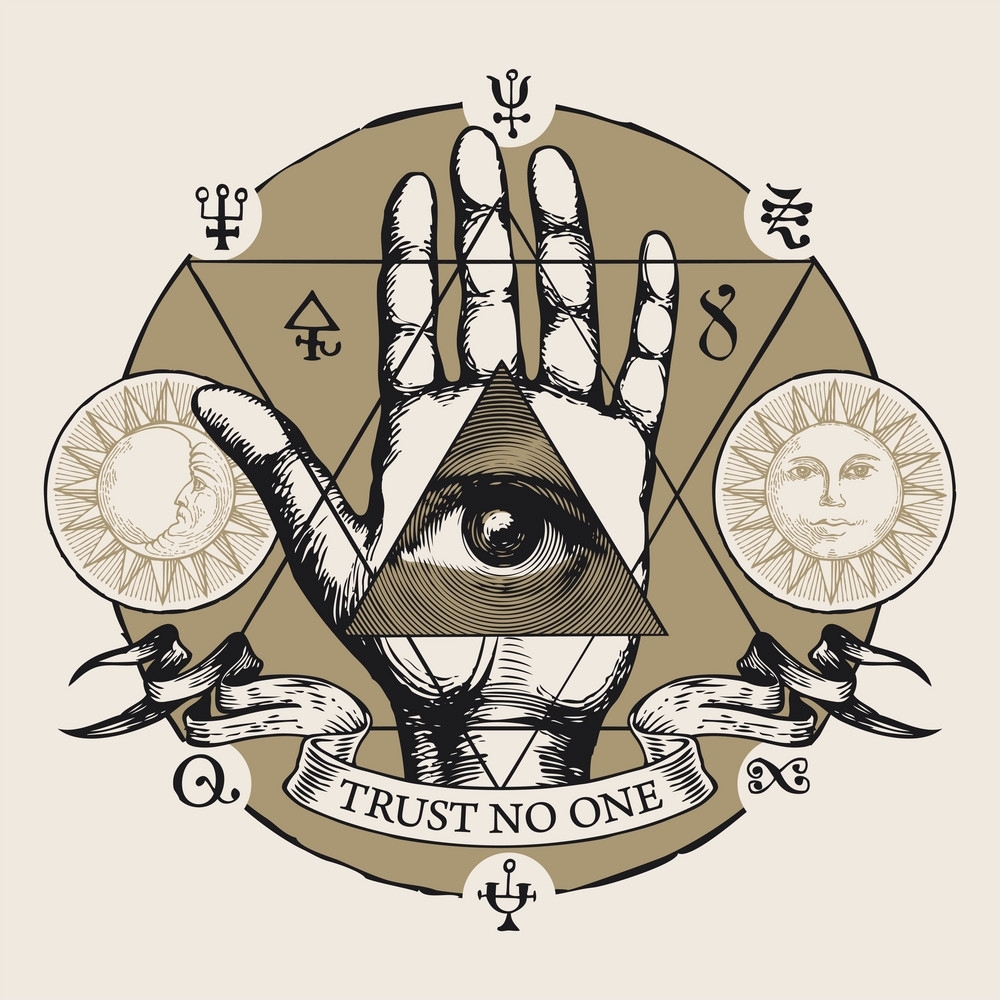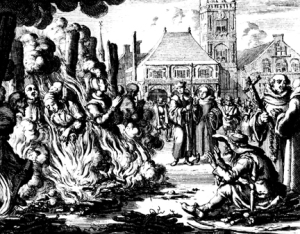A woodcutting of accused witches being burned at the stake
After the fall of the Roman Empire, Christianity united the pockmarked nations left in its wake under a common banner. Its ubiquitousness in Western civilization today has everything to do with this opportunistic gambit for political control. Between the 4th and 12th centuries, the infrastructure of Christianity, particularly Catholicism, took root in almost every European government, laying the framework for the dramatic show of persecution to follow – not just of Jews, or Muslims, but of every other ‘Satanic influence’ they designated a threat.
Between 1542 and 1735 in England, Scotland and Ireland, a number of so-called ‘witchcraft acts’ were passed prohibiting the use of magic or witchcraft. The contingency upon which their convictions were based was rarely an appeal for the defendant’s use of magic, as it was a widely accepted fact of life; spiritualists often occupied places of reverence within their communities as healers. Rather, the burden of the prosecution was to prove that the magician had deliberately used their powers for malicious purposes. Accused witches were generally elderly females of little or no means to defend themselves, a fact that Joseph Addison, an English politician and essayist, pointed out with disdain in an article he published in The Spectator in 1711, but no one was safe from accusations if they fell out of favor with the local clergy. Between 1/5th and 1/4th of accused witches were male.
The Malleus Maleficarum (in English: Hammer of the Witches), written in 1486 by Catholic clergyman Heinrich Kramer, detailed measures other clergymen could take to determine whether or not an accused witch was guilty of communion with demons. It marked the beginning of an era of violent persecution of witches, alleged or genuine.
Malleus Maleficarum, by Heinrich Kramer
The height of terror related to the witch of popular lore was the pacts they allegedly made with the Devil. Accounts differ on what such a pact constitutes; it varied depending on the circumstances or appearance of the defendant. For example, midwives were frequently accused of Devil pacts when children died in their care, as they were wont to do in an era of high infant mortality. It was alleged that these Satanic midwives were sacrificing the children to the Devil in exchange for supernatural powers. Young women of wanton reputation were also targeted with accusations of fornication with animals, their demonic ‘familiars,’ or Satan Himself in exchange for the powers of seduction, which they would use to tempt married men (thereby relieving the adulterous spouse of liability).
Central and southern Germany was the area of the highest concentration of witch hunts through the following centuries, experiencing its height of witch-burnings between 1561 to 1670. A pamphlet published in the imperial lordship of Wiesensteig in 1563 reflects the paranoia of the time in its sensationalist title, “True and Horrifying Deeds of 63 Witches.”
The North Berwick witch trials in 1590 implicated seventy people of suspected witchcraft, the confessions of which were extracted by torture in East Lothian, Scotland.
In 1612, Thomas Potts, clerk to the court that convicted eleven of twenty accused witches in Lancashire, England, published an account of the trial in his book The Wonderfull Discoverie of Witches in the Countie of Lancaster. Between the 15th and 18th century, less than 500 executions were carried out on accused witches in England; the ‘Pendle Witches,’ as the trial in 1612 was infamously dubbed, accounted for two percent of them.
In 1610, the Spanish Inquisition tribunal of Logroño, 300 people were suspected of performing akkelare, the Basque term for witchcraft, in villages around Navarre. Forty were tried. Twelve were burned at the stake; an additional five were burned symbolically, as they had died in prison while awaiting trial. Alonso de Salazar Frías, Spanish inquisitor and clergyman (nicknamed ‘The Witches’ Advocate’) remarked, “There were neither witches nor bewitched in a village until they were talked and written about.”
Witch hysteria was by no means relegated solely to Europe. In 1645, the Americas experienced its first instance of accused witchcraft when husband and wife Hugh and Mary Parsons accused each other of sorcery related to the death of their infant son. Hugh was found innocent of witchcraft, as was Mary; however, Mary was convicted over the death and executed by hanging. She died in prison before her punishment could be meted out. In New England, between the years of 1645-1663, thirteen women and two men, all accused of witchcraft, were executed. The Salem Witch Trials followed between 1692 to 1693, in which twenty eight people were accused, nineteen were convicted and hanged, and five died in prison while indefinitely detained.
These are just a few instances of note. Between 1480 and 1750, the number of executions related to witchcraft persecution was estimated at 40,000 to 60,000.


